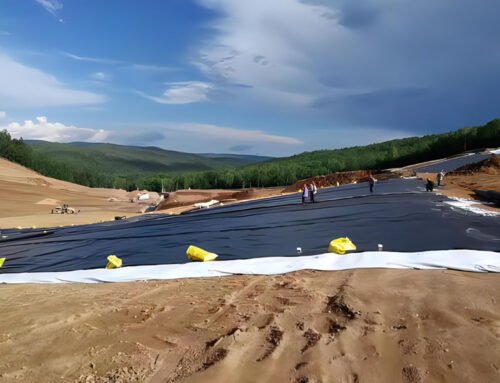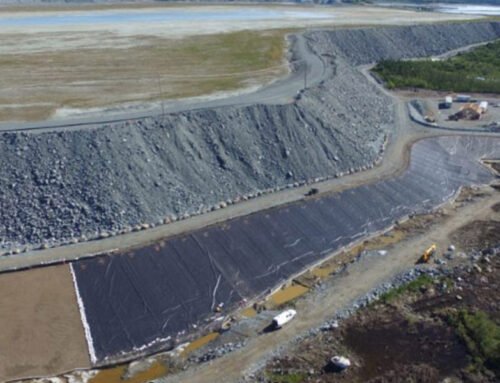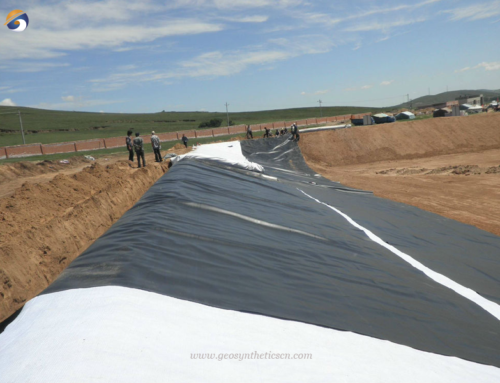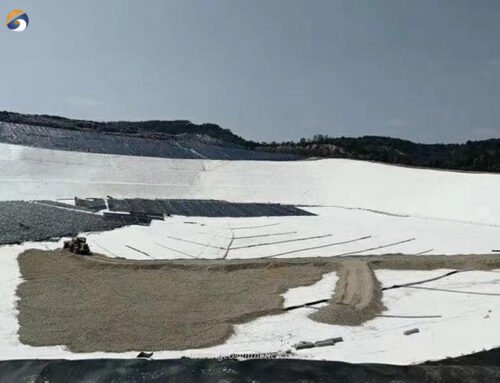HDPE impermeable membrane, also referred to as HDPE geomembrane liner, is a waterproof material composed of polymer as its primary raw material. It is categorized into three types: low-density polyethylene (LDPE) geomembrane, high-density polyethylene (HDPE) geomembrane, and EVA geomembrane.
Composition & Core Functionality
The HDPE geomembrane actively combines a high-density polyethylene (HDPE) plastic film with non-woven geotextile layers to create a dual-function barrier. Its primary anti-seepage performance stems from the impermeable plastic film, while the geotextile reinforcement enhances tensile strength and puncture resistance. Additionally, the material incorporates carbon black, UV stabilizers, and antioxidants during blow-molding to ensure long-term durability against environmental degradation.
Applications & Performance Benefits
This engineered solution actively prevents water leakage in critical water conservancy projects, including tailings ponds, reservoirs, and canals. Moreover, its chemical-resistant formulation reliably withstands harsh conditions while maintaining structural integrity for decades. Consequently, it delivers cost-effective, sustainable seepage control for infrastructure requiring fail-safe containment, such as dams and artificial lakes.
1. CASE STUDY of HDPE Impermeable Membrane for Tailings Treatment Project in Peru
- Location – Peru
- Product(s) – HDPE Geomembrane
- Application – tailings treatment project
2. Why Chose HDPE Impermeable Membrane for Tailings Treatment Project
Part 1: Challenges & Risks of Tailings Storage
Tailings storage actively presents critical environmental and safety challenges, including flow instability, dam collapse risks, and vegetation destruction—particularly during rainy seasons when landslides become frequent. Additionally, the inherent hazards of towering tailings dams compound security concerns. Moreover, tailings composition often contains residual beneficiation agents and heavy metals that severely damage ecosystems, while sulfides generate acidic water that further leaches toxic metals, threatening entire watersheds.
Part 2: Treatment Methods & Anti-Seepage Solutions
Current tailings management strategies actively repurpose waste as underground mine fill (e.g., water-sand mixtures or cement-aggregate blends) or employ afforestation for stabilization. However, the most economical approach transforms tailings into construction materials like ceramsite, concrete aggregates, or road pavement—replacing machine-made sand. Crucially, toxic tailings containing heavy metals or radioactive elements require geomembrane anti-seepage systems to actively block groundwater contamination, ensuring environmental protection while enabling resource utilization.
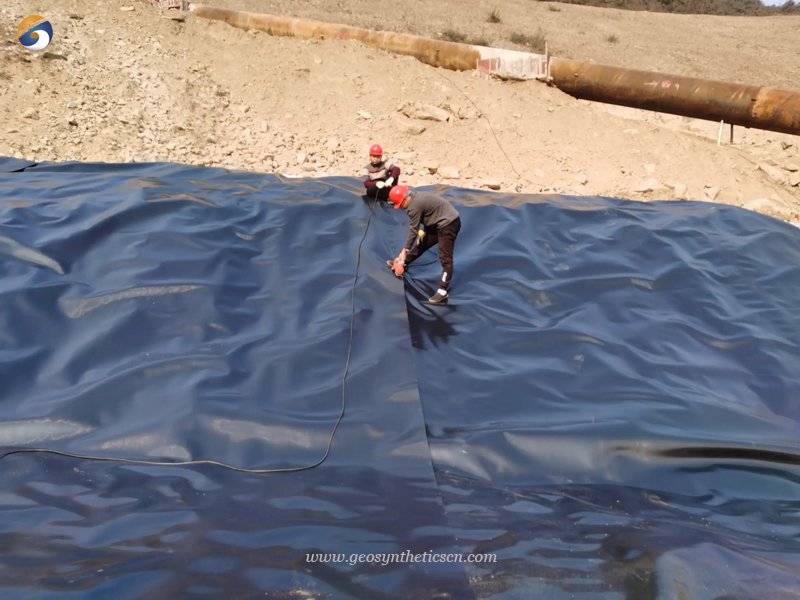
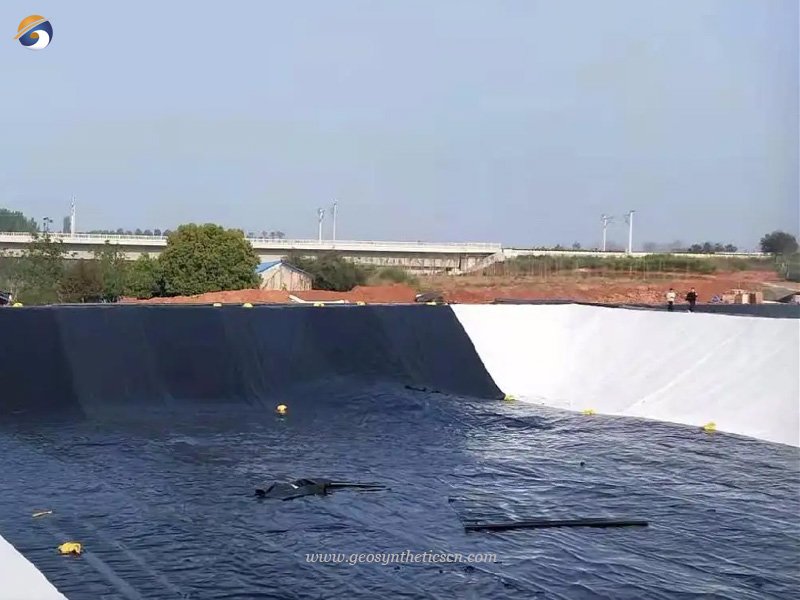
3. Solution of HDPE Impermeable Membrane for Tailings Treatment Project in Peru
3.1 Customized Solutions & Technical Support
We actively tailor geomaterial specifications to project-specific requirements while providing detailed installation guidelines. Additionally, our technical team ensures proper welding methodology and quality control measures are clearly communicated for optimal field implementation.
3.2 Precision Welding Protocol
The double-track hot-melt welding method rigorously employs stable power sources to create seams that exceed base material strength (per ASTM standards), with airtightness verified through vacuum testing. Moreover, extrusion welding supplements this process in complex areas, while strict moisture control (<15%) and surface preparation prevent adhesion failures. Crucially, parameter adjustments account for ambient temperature and material properties to avoid defects like virtual welding.
3.3 Defect Mitigation & Quality Assurance
Defective welds are promptly repaired using hot-melt extruders, with dislocated/”T” joints systematically corrected. Furthermore, damaged sections are excised and overlapped with regulated width, while slope overlaps prioritize lower-membrane positioning to prevent slippage. Ultimately, all splicing adheres to anti-seepage benchmarks, with controlled tension application to maintain joint integrity throughout the liner’s service life.
4. Benifits of HDPE Impermeable Membrane for Tailings Treatment Project in Peru
The HDPE impermeable membrane exhibits exceptional tensile strength, enabling it to meet the demands of high-standard engineering projects. Its robust tensile properties make it suitable for applications where strength is crucial.
Geomembrane, as an anti-corrosion material, demonstrates excellent chemical stability, effectively resisting the corrosive effects of strong acids, alkalis, and oils. It serves as a reliable barrier against corrosion, ensuring long-term protection.
The HDPE impermeable membrane is a high-strength and chemically stable material used for anti-corrosion purposes. It exhibits exceptional tensile strength, heat and cold resistance, and weather resistance. The geomembrane has a high anti-seepage coefficient and provides reliable waterproofing capabilities. It is made of high-quality virgin resin with additives for enhanced performance. The HDPE geomembrane is widely used in various applications, such as biogas digesters, tailings storage sites, and subway projects, due to its resistance to environmental stress cracking and chemical corrosion.
5. Specificatipns of HDPE Impermeable Membrane for Tailings Treatment Project in Peru
- Total HDPE Geomembrane quantity–56,900 squares meters
- Geomembrane Specifications – 2.0mm
- Each roll size is 7m*50m
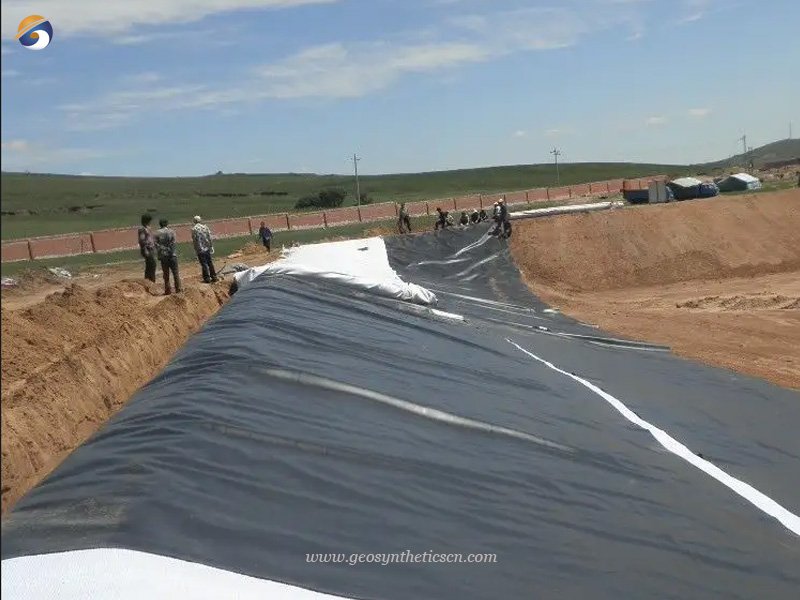

About GEOSINCERE
GEOSINCERE has been dedicated to manufacturing wholesaling geotexitle and geosynthetics products and solutions to worldwide customers since its foundation in 2007. Our main innovative, high quality products include geotextiles, geomembranes, geogrids, geocells, geosynthetic clay liners, and drainage boards, etc al.
GEOSINCERE offers both high quality geosynthetic products but also professional design and installation service. OEM, ODM, custom development and fabrication are also available. If you have any questions or inquiries, please contact us, we will reply as soon as possible.

